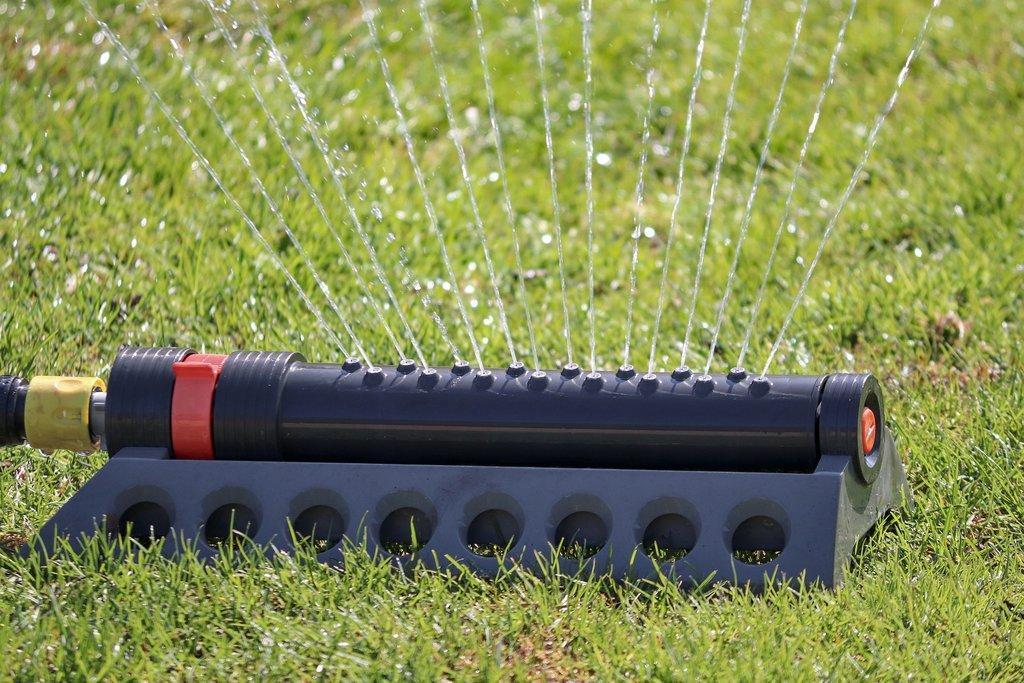By Julene Reese
Currently, 72% of Utah is experiencing extreme drought, with the remainder of the state in severe drought. With a dry summer likely and water restrictions already in place around the state, it is crucial that Utahns conserve the water we have. One bright spot is the recent precipitation in northern Utah, which means that soil water stores have been replenished and irrigation can be postponed.
According to Kelly Kopp, Utah State University Extension water conservation and turfgrass specialist, Utah is the second driest state in the nation based on average annual precipitation, yet one of the top per capita users of water. In addition, urban landscape irrigation accounts for up to 65% of the annual municipal water use, and much of that is applied in excess of what plants actually need.
“We all need to conserve in every way possible so that we have enough water for public consumption, instream flows and agricultural production,” Kopp said. “Scheduling landscape irrigation according to plant water needs will reduce water waste, and proper irrigation encourages deeper root growth and healthier, more drought-tolerant plants.”
Because of the drought, some areas of Utah are currently recommending that home and business owners irrigate just twice per week.
“We recommend ½ inch of water with each irrigation or one inch of irrigation per week,” she said. “It will be tempting to water more, but that amount is more than sufficient to keep grass alive. Though the grass will go dormant during the heat of the summer with these restrictions, it is a completely normal biological process, and grass will recover as temperatures cool.”
Kopp said with water being limited, it’s important to prioritize which plants to water first.
Priority #1: Trees – Trees provide shade, help cool your home and produce oxygen. They are the most valuable plants in a landscape.
Priority #2: Shrubs – Shrubs filter dust and pollution from the air and help dampen traffic noise.
Priority #3: Perennials – Over time, perennial plant roots help improve landscape soil.
Priority #4: Annuals – Annuals provide pollen for bees and other pollinators as well as food for hummingbirds. They also add bright colors and interest to the landscape.
Priority #5: Turfgrass – Of all landscape plants, grasses are the toughest. They will enter dormancy during drought and high temperatures and recover when conditions improve.
“We have heard of recommendations to plant water-wise landscapes to save water, which is a great idea, but now is not the time to plant,” she said. “Wait until fall when it’s cooler since we don’t have the water to establish new landscapes right now.”
Kopp shared these irrigation best practices:
* Do not rely on a sprinkler clock or irrigation controller to water lawns on a set schedule. Instead, determine how much water the lawn actually requires and set irrigation schedules accordingly.
* Small areas of the lawn can brown during hot weather because of inefficiencies in irrigation systems. Instead of increasing the amount of irrigation time for the entire landscape, water brown areas with a small hose-end sprinkler or by hand.
* Mow lawns as high as possible and practical (2-4 inches). This encourages deeper rooting and increases overall drought hardiness.
* Irrigate shady and sunny areas accordingly. Shady areas require much less irrigation than sunnier areas.
* Cover bare soil in the garden and flower beds with 2-3 inches of mulch. This saves water and reduces the need for weeding. Inexpensive mulch can be obtained from green waste recycling centers. Grass clippings also work well and are free and can be used to mulch lawn areas.
* Hand water or use drip irrigation on flowerbeds, vegetable gardens and shrub beds. Water should be directed toward plant’s root zones, penetrating the soil since inches for flowers and vegetables and two feet for established trees and shrubs.
To assist homeowners, businesses, agricultural producers and others, USU Extension created a drought information website, drought.usu.edu, that is updated regularly. Also available is USU’s Center for Water-Efficient Landscaping website, extension.usu.edu/cwel, which includes information on water-wise and native plants, sustainable turfgrass research, and urban water conservation.


